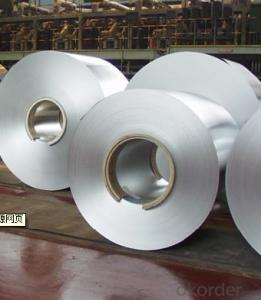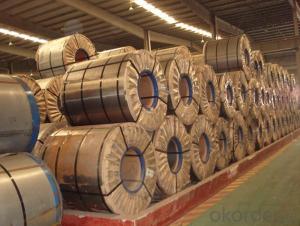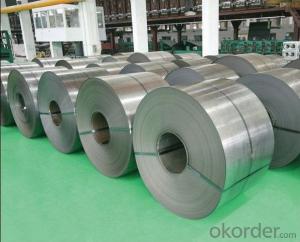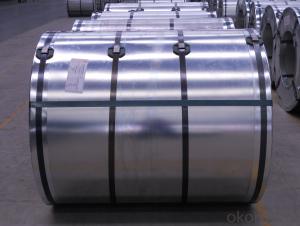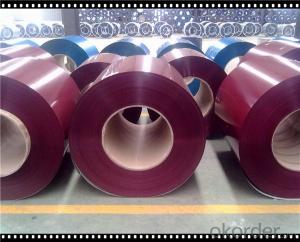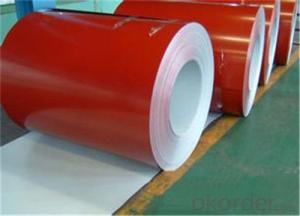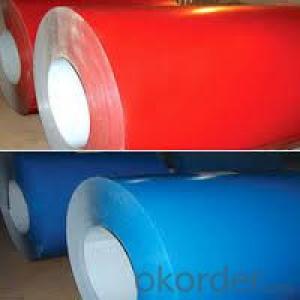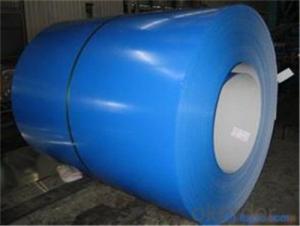Thickness: 0.15 - 2.0 mm
Technique: Hot Rolled
Application: Container Plate
Surface Treatment: Galvanized
Secondary Or Not: Non-secondary
Certification: CE
Special Pipe: Thick Wall Pipe
Alloy Or Not: Non-alloy
Section Shape: Other
Galvanized Steel Coil Cold Rolled Sphc CNBM
- Loading Port:
- Guangzhou
- Payment Terms:
- TT OR LC
- Min Order Qty:
- 20 m.t.
- Supply Capability:
- 3000 m.t./month
OKorder Service Pledge
OKorder Financial Service
You Might Also Like
1.Quick Details:
2.Packaging & Delivery
| Packaging Details: | standard package |
|---|---|
| Delivery Detail: | 1-4 week |
cold rolled galvanizing steel coil
galvanized iron steel coil
Thickness | 0.15mm--2.0mm |
Width | 50--1250mm |
Zinc Coating | 40gsm—275gsm |
Spangle | Big, small regular spangle and zero spangle |
Surface Treatment | Chromate, Galvanized, Skin Pass, Passivity and Oiled(un-oiled) |
ID | 508mm or 610mm |
Coil Weight | 3--7 Metric Tons and as requirements |
Production | 12,000 metric tons per month |
More information of Galvanized Steel Coils/GI/PPGI/HDG | |
Payment Term | T/T or L/C (We usually charge 30% of the deposit first.) |
Delivery Port | Qingdao Port or Tianjin Port |
Delivery Time | Within 20 days after receipt of T/T or L/C |
MOQ | 25 metric tons or one 20 feet container |
Application | General use, Color coating, Corrugated Roofing making, Outside of the buildings Structure, Deep Drawing and etc. |
Ambition | Reliable product, Competitive price, On-time delivery and High standard service. |
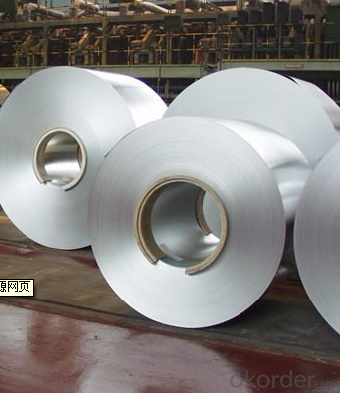
5.What is the application of Steel Coil?
There are two sides,one is out side: Workshop, agricultural warehouse, residential precast unit, corrugated roof, roller shutter door, rainwater drainage pipe, retailer booth;the other is inside: Door, doorcase, light steel roof structure, folding screen, elevator, stairway, vent gutter.
- Q: How do steel coils compare to other materials in terms of strength?
- Steel coils are known for their exceptional strength and durability, making them one of the strongest materials available in the market. Compared to other materials, such as aluminum or plastic, steel coils exhibit superior strength and resistance to deformation or breakage. The high tensile strength of steel allows coils to withstand heavy loads, making them ideal for various industrial applications, including construction, automotive manufacturing, and the production of heavy machinery. Additionally, steel coils possess excellent fatigue resistance, meaning they can endure repeated stress and strain without losing their structural integrity. This strength advantage makes steel coils a preferred choice for applications where reliability and safety are of utmost importance.
- Q: How are steel coils used in the manufacturing of body reinforcements?
- Steel coils are used in the manufacturing of body reinforcements by being processed and shaped into various structural components, such as beams and frames, which provide strength and support to the body of a vehicle. These reinforcements help enhance the vehicle's structural integrity, ensuring safety and protection for the occupants in the event of a collision or impact.
- Q: which pokemon has the most steel pokemon???
- Robopon ;) Transformers? really... fail joke, Robopon is essentially pokemon with robots ;) But on-topic, i believe Platinum would be your best choice.. from memory, it had no end of steel and steel-hybrids.
- Q: Where can I find a discount online for Stainless Steel Magnetic Knife Rack
- listed under are a number of them: 5.0 out of 5 stars could no longer be extra effective, March 3, 2006 by applying Denise M. Henderson (Groveland, CA united states of america) stable sturdy shape. seems great. common installation. appropriate length. Magnet appropriate capability. only confirm you place the back of the blade to the magnet first, then turn the knife flat onto the magnet. or you will cut back to rubble the knife blade. 5.0 out of 5 stars purchase it!, November a million, 2004 by applying T. Berktan (Le chef amateur) (Chicago, IL) i admire this knife holder. at first it rather is sanitary. would not take counter area and IT seems SO COOL on the wall. i might purchase it lower back with out hasitation if I had to. 5.0 out of 5 stars Very clever and seems great!! i like it!!, August 24, 2005 by applying Stacy S. Wooten i in my opinion, rather like this knife holder. It replaced into common to place up and seems great on my kitchen backsplash. it rather is long sufficient to hold all my knifes (approximately 8). it rather is a competent, stable magnet, and seems very stylish in my kitchen. i might surprisingly propose this product to everyone searching for a magnetic knife holder.
- Q: Can steel coils be galvanized?
- Yes, steel coils can be galvanized. Galvanization is a process of applying a protective zinc coating to steel to prevent corrosion. Steel coils are often galvanized to increase their durability and resistance to rust.
- Q: How do steel coils contribute to the aerospace manufacturing industry?
- Steel coils are an integral component of the aerospace manufacturing industry as they provide numerous benefits and contribute to the overall efficiency and quality of aircraft production. Firstly, steel coils are used in the fabrication of various structural components of an aircraft, such as wings, fuselage, and landing gear. The high strength and durability of steel make it a suitable material for these critical parts, ensuring the safety and reliability of the aircraft. Steel coils provide the necessary raw material for the precise manufacturing processes required in the aerospace industry, allowing for the creation of lightweight yet robust structures that can withstand the demanding conditions of flight. In addition to their structural applications, steel coils are also used in the production of smaller aircraft components. These include fasteners, connectors, and brackets that hold different parts of the aircraft together. Steel's exceptional mechanical properties, including resistance to fatigue and corrosion, make it a preferred choice for such components, ensuring their long-term performance and safety. Moreover, steel coils contribute to the aerospace manufacturing industry by enabling cost-effective production processes. Steel is readily available in large quantities, making it a cost-efficient material for aircraft manufacturing. The ability to produce steel coils in various sizes and thicknesses allows manufacturers to tailor their production to specific aircraft models or design requirements, reducing waste and optimizing resource allocation. Furthermore, steel coils offer inherent recyclability, which aligns with the aerospace industry's growing focus on sustainability. Recycled steel can be used to produce new coils, reducing the need for raw material extraction and minimizing environmental impact. This circularity in the use of steel coils supports the aerospace industry's efforts towards a more sustainable and environmentally friendly manufacturing process. In conclusion, steel coils play a crucial role in the aerospace manufacturing industry by providing the necessary materials for the production of aircraft structures and components. Their strength, durability, and cost-effectiveness make them a valuable resource, ensuring the safety, reliability, and efficiency of aircraft production. Steel coils also contribute to the industry's sustainability goals through their recyclability, aligning with the growing focus on environmental responsibility.
- Q: What are the dimensions of steel coils used in the pipeline industry?
- The dimensions of steel coils used in the pipeline industry vary depending on the specific requirements of the project. However, common dimensions for steel coils used in the pipeline industry range from 0.5 to 2 inches in thickness and 24 to 60 inches in width. The length of the coils can vary, but they are typically around 100 to 200 feet long.
- Q: Would the Ruger Sr22 pistol or the SW MP 15-22 be any good for the steel challenge?
- Diamond stressful situations the prevalent view of primitive societies as for this reason of a great number of exceptional causes quite. in case you study the e book he thinks that they are easily even smarter than us provided that that when he become once residing with the hot Guinea people he felt that he become once the single which become once boring because that he could no longer do wise duties similar to following a course and different stuff that they do of their daily time. also he thinks they're smarter because that we watch such plenty television, mutually they're actively residing existence. maximum of this counsel you'll come across on information superhighway website 20 -21. i variety of vaguely responded this question reason absolutely i have no theory what pejorative attitude..... i even regarded it up on-line for you and doesnt quite make sense too much.....
- Q: How are steel coils protected from extreme weather conditions?
- Steel coils are protected from extreme weather conditions by being stored in covered warehouses or using waterproof covers to prevent direct exposure to rain, snow, and other elements. Additionally, corrosion-resistant coatings are often applied to the surface of the coils to provide an extra layer of protection against moisture and other environmental factors.
- Q: What are the common coil packaging methods?
- The common coil packaging methods include shrink wrapping, strapping, banding, and stretch wrapping.
Send your message to us
Galvanized Steel Coil Cold Rolled Sphc CNBM
- Loading Port:
- Guangzhou
- Payment Terms:
- TT OR LC
- Min Order Qty:
- 20 m.t.
- Supply Capability:
- 3000 m.t./month
OKorder Service Pledge
OKorder Financial Service
Similar products
Hot products
Hot Searches
Related keywords
